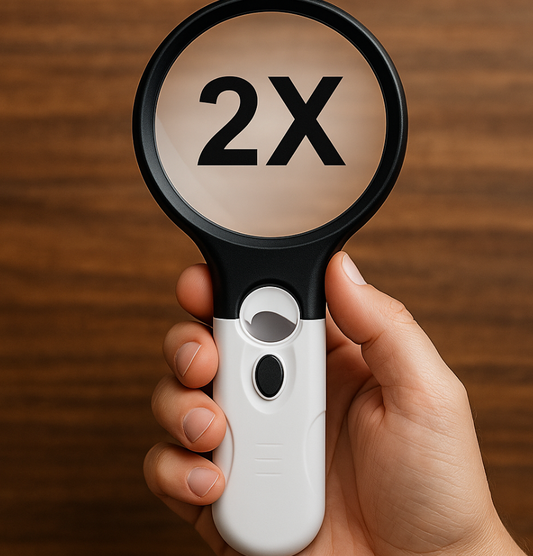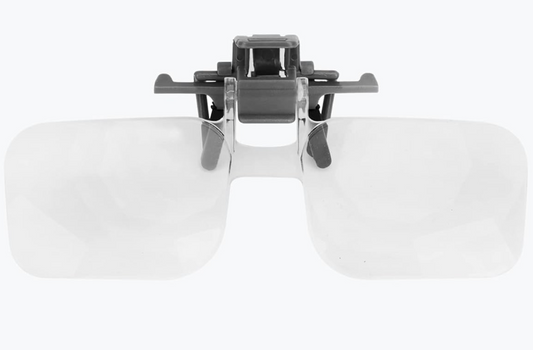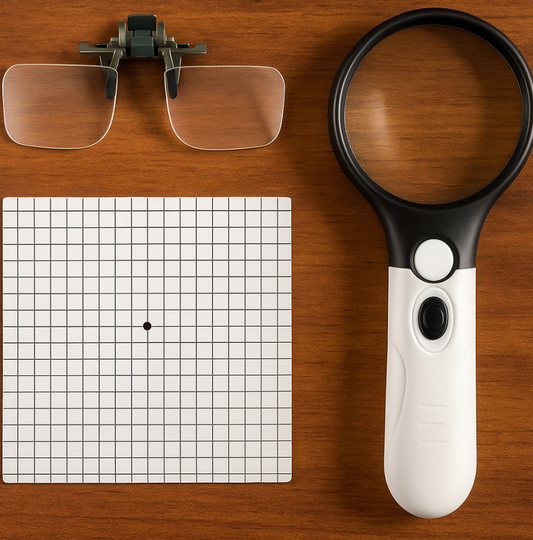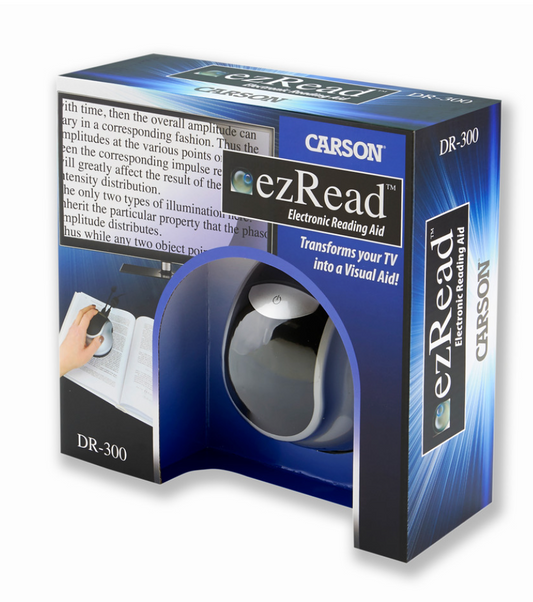Preventing Vision Loss
Share
There are several ways to help protect your vision. As with most chronic, progressive diseases - diet & nutrition lead the list. Regular, routine eye examinations with your optometrist to ensure you are not at higher risk for macular degeneration, glaucoma or any other eye condition will help protect your vision.
Diet and Nutrition:
- Vitamins A, C, and E: Known antioxidants that may help protect against cellular damage in the eyes.
- Lutein and Zeaxanthin: Found in green leafy vegetables and thought to reduce the risk of age-related macular degeneration (AMD).
- Omega-3 Fatty Acids: Commonly found in fish, these are known to support retinal health and may help prevent dry eyes. Nutra-Sea & PRN are our top choices due to their sustainable and trusted production.
- Our recommendations for supplements can be found HERE
- Hydration: Adequate water intake is often recommended to support tear production and eye hydration, especially for those with dry eye symptoms.
- Exercise: Exercise is an important part of keeping healthy and helps to reduce the risk of conditions that may affect vision, like diabetes and hypertension.
Preventive Eye Care
- Regular Eye Exams: We recommend routine checks with your optometrist at least once every two years. If you are someone who has been diagnosed with a potentially progressive eye condition, this frequency will likely change from every 3 months to yearly depending on your eye care providers recommendation.
- Glaucoma: Since glaucoma can lead to silent, painless, irreversible vision loss, it is vital to see your eyecare professional on a regular basis to test for intraocular pressure (think puff of air or blue light test!) and visual field tests to detect it early.
- Diabetic Retinopathy: Regular exams (at least once a year) are important to prevent vision loss related to diabetic retinopathy.
- Macular Degeneration: For those at risk of macular degeneration, your eye care provider will recommend additional tests like an OCT (optical coherence tomography) and other imaging tests to detect early changes in the retina. Download our free AMD Amsler Grid for at-home monitoring.
Protective Measures for Eye Health
- Sunglasses and UV Protection: Always choose sunglasses that block 100% of UV rays to protect against UV damage, which can contribute to cataracts and other eye problems.
- Blue Light Protection: There is limited data here to show if blue light actually affects retinal health, however many patients find these types of lenses lead to reduced eye strain when working on devices.
Lifestyle Changes for Eye Health
- Reducing Screen Time: Tips for managing screen time and taking breaks (e.g., the 20-20-20 rule) to reduce digital eye strain.
- Avoiding Smoking: Smoking is known to increase the risk of AMD, cataracts, and general eye inflammation, so many people look for information on how quitting smoking can benefit eye health.
- Stress Reduction and Sleep: Quality sleep and stress management are key factors in maintaining clear, comfortable vision.
Preventive Care for Children and Adolescents
- Eye Exams for Children: It is recommend children have their first eye exam at 6 months of age. Early screenings are important to detect issues like amblyopia, refractive errors, or eye alignment problems. While school screenings can detect some issues - an optometrist will be able to perform a full exam. Even kids who pass a school screening should still be seen by an optometrist.
- Limiting Screen Time for Kids: Less is always best. Please see the guideline from the Children's Hospital of Los Angeles HERE for recommendations & guidelines for limiting children’s screen time to prevent digital eye strain. Outdoor activities for eye health should always be encouraged in young children!.



